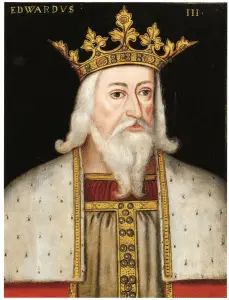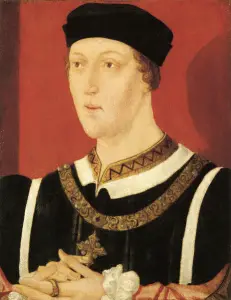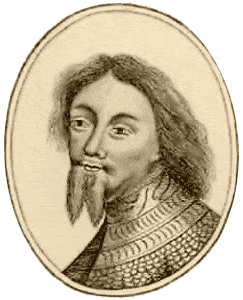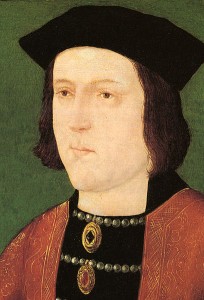
On this day in history, the 22nd August 1485, the Battle of Bosworth (or Battle of Bosworth Field) took place in Leicestershire, England. The battle took place during the Wars of the Roses, a civil war between the Houses of York and Lancaster, and is famous for being the battle which gave birth to the Tudor dynasty. It was also the last time that a King of England was killed in battle.
The Wars of the Roses
Between c1455 and 1485, England was torn apart by the Wars of the Roses, a dynastic civil war between two branches of the House of Plantagenet: the House of York and the House of Lancaster, who both believed they had claims to the English throne as they were both descended from Edward III. Obviously, I could write a book about the Wars of the Roses, but here I just want to give a brief overview to give you the context for the Battle of Bosworth. I realise I’ve missed lots out so I apologise in advance!
The House of Lancaster

The Lancastrian claim to the throne came from Edward III’s fourth son, John of Gaunt, 1st Duke of Lancaster. In 1399, John’s son, Henry of Bolingbroke, deposed his cousin, Richard II (son of Edward, the Black Prince, eldest son of Edward III), became King Henry IV and established the Royal House of Lancaster. On his death in 1413, the crown passed to his son Henry V who subsequently passed the crown on to his son, Henry VI, on his death in 1422. Henry VI, however, was mentally unstable, so some of his nobles allied themselves with the Duke of York, Richard Plantagenet, who was looking to act as regent and ultimately take the throne.
The House of York
Richard, Duke of York, was descended from the second son of Edward III, Lionel of Antwerp, through his mother, Anne Mortimer, and from the fifth son of Edward III, Edmund of Langley, 1st Duke of York, through his father, Richard of Conisburgh. Although Richard’s father had been executed as a traitor in the reign of Henry V, Richard had been allowed to inherit his title and lands from his uncle, Edward of Norwich, 2nd Duke of York, who was killed at the Battle of Agincourt. His inheritance enabled him to become the richest and most powerful noble in England.
Civil War

Henry VI’s mental problems led to great social unrest and his policy of peace with France also made him unpopular with some of his nobles, including the Dukes of Gloucester and York. In 1445 Henry VI married Margret of Anjou and, as part of the Treaty of Tours, yielded the lands of Maine and Anjou to the French king, Charles VII, a move that was hugely unpopular. As Henry’s reign went on, he became increasingly unpopular, due to the economic situation in England, the corruption in his government and his policy of peace with France.
In 1452, disaffected nobles called Richard, Duke of York, back from Ireland (he had been made Lieutenant of Ireland to keep him out of the way) and begged him to put a stop to what was going on in England and make a stand against Henry VI and his government. To cut a rather long story short, Richard, was able to take control of England as Protector of the Realm (regent) in 1454 after Henry VI had a nervous breakdown, but it was shortlived as Henry recovered at Christmas 1454 and set about reversing all of Richard’s policy and good work. However, many nobles supported Richard’s regency and this led to a war between Henry’s house, the House of Lancaster, and Richard’s house, the House of York. Richard was killed in one of the battles of the Wars of the Roses, the Battle of Wakefield in December 1460, but just weeks after his death, his son, Edward, Earl of March, was crowned King Edward IV of England after defeating the Lancastrians in a succession of battles, supported by his cousin, Richard Neville, 16th Earl of Warwick (Warwick the Kingmaker).

To cut another long story short, Edward IV fell out with Warwick (the Kingmaker) and this led to Warwick plotting against Edward and supporting the claims to the throne of George, Duke of Clarence (Edward’s younger brother), and then Henry VI. Henry was briefly restored to the throne in 1470 but this was shortlived as Edward was able to claim the throne back in 1471 after taking Henry prisoner, defeating and killing Warwick at the Battle of Barnet and then defeating the Lancastrians at the Battle of Tewkesbury. Henry VI died in May 1471, although it is not clear whether he died naturally or whether he was murdered on Edward IV’s orders.
In 1483, Edward IV died unexpectedly. His brother, Richard, Duke of Gloucester, was appointed Lord Protector to act as regent for Edward’s son, Edward V, who was just a child. To cut another long story short, Edward IV’s marriage to Elizabeth Woodville was deemed to be invalid, thus making the claims of their sons, Edward and Richard, to the throne invalid, and Richard seized the throne becoming Richard III. The boys, who were lodged in the Tower of London, disappeared and it is not known what exactly happened to them.
In 1483, Henry Stafford, 2nd Duke of Buckingham, rose up against Richard III, planning to replace him with Lancastrian, Henry Tudor, but the revolt was unsuccessful and Buckingham was executed as a traitor. In 1485, Henry Tudor, 2nd Earl of Richmond, and his uncle, Jasper Tudor, rebelled against Richard. Henry’s claim to the throne came through his mother, Margaret Beaufort, who was a great-granddaughter of John of Gaunt, Duke of Lancaster, and in 1485 he was the senior Lancastrian claimant because Henry VI and his son, Edward, Prince of Wales, were both dead. On Christmas Day 1483, in Rennes Cathedral, France, Henry pledged to marry Elizabeth of York, daughter of Edward IV and the sister of the Princes in the Tower (Edward V and his brother Richard), thus gaining more support for his claim to the English throne. Henry also had the support of the Welsh, being descended through his father, Edmund Tudor, from Rhys ap Gruffydd, The Lord Rhys.
Find out what happened when Henry and his 5,000 soldiers marched from Wales to England in The Battle of Bosworth 1485 Part 2 – The Battle.